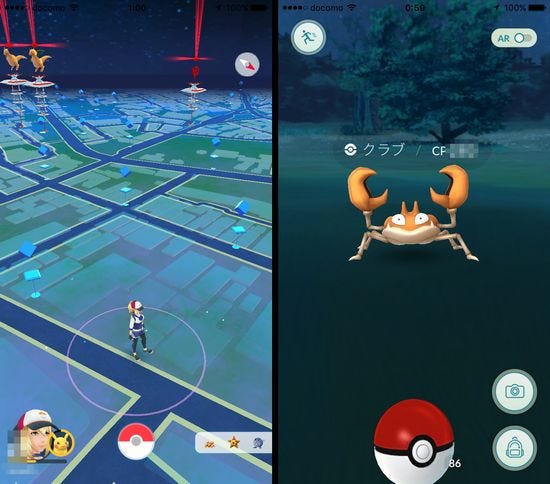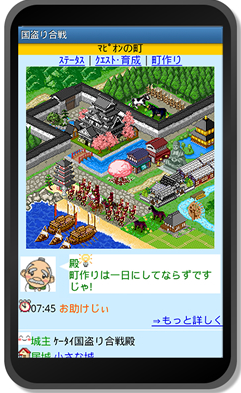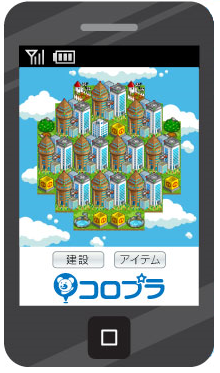Trending
Opinion: How will Project 2025 impact game developers?
The Heritage Foundation's manifesto for the possible next administration could do great harm to many, including large portions of the game development community.
Based on my past experience of developing location-based games, I would like to suggest how to approach in order to solve the problem and how to design game balance in location-based AR game.

(I initially posted this article in my blog LEAP TO THE FUTURE.)
Certainly, Pokémon Go has caused an incredibly large social phenomenon over the world than ever before in the history of video game. Last year, Pokémon Go quickly reached 500 million downloads and recorded sales of more than around one billion dollars.

Pokémon Go has caused a large phonomenon worldwide.
The game successfully involved many female-users who like to play only 3-Match every day, a lot of middle-aged people who usually don’t play games. The game made many people experience the possibility of AR (Augmented Reality) games without complex explanation.Many people would have felt the existence of another world overlapping with the real world.
Yes, it is certainly another world related to the real world. And so, people find new disparities as in the real world.
Nowadays, we face various disparities, including income in the gap-widening society.And then we are experiencing a new big gap in the location-based game, real world MMO-game.
The mobile gamers living in a large city patrol many PokéStops in the neighborhood every day, on the other hand the rural mobile gamers have to travel away to some sparse PokéStops. This gap-widening problem is common not only in Pokémon Go but also in general location-based AR games.

disparities between city and countryside
Please don't feel a despair another world soon. That is because it is not easy to reduce disparities in the real world, but it might be somewhat easier in the virtual world.
Okay, let me suggest a solution to the gap-widening problem, based on my past experience of developing some location games. I would like to suggest how to approach in order to solve the problem and how to design game balance in location-based AR game.
First, I would like to explain my past experience. Japan's mobile phone operators (docomo, au, Softbank) have provided location-based information services since early 2000s and Japanese mobile game developers have developed over 40 location-based games. Also, I have developed two location-based games such as a hack-and-slash RPG (confidential) and a dog-breeding game, wan-one GRAND PRIX.
There were two location-based information at that time. A simple one that triangulates the distance from the cellular phone base-stations, and another one that uses GPS and has high accuracy. Much of cellular phones only support simple ones.
The developers have designed their games under the restriction that users must click to measure a new position and a distance each time they move. Therefore, we usually used two parameters "spot" and "distance" mainly to design our games. We changed the design of the game as a whole, depending on whether "spot" or "distance" we see heavily an importance on.
You go to the spot, and get something or find in-game events like finding treasures, encounter of monsters. If the spot is linked to the real site-seeing site, the mechanics that motivate players to move around all specified sites, such as so called "Stamp Rally", will have a very beneficial effect for the tourism industry.

(from official website)
It is a popular activity for tourism. Japanese tourists go around several spots, having a sheet with blank spaces where the stamps will go. Each time they visit each spot, their sheet is stamped. When the sheet is full, they turn it in for a prize or others.
In fact, the Japanese tourism industry often holds a limited time stamp rally. Since 1997, Japan's railroad company, East Japan Railway Company holds a stamp rally over dozens of stations at the elementary school summer vacation season almost every year.
Also, for instance, Mapion's "Keitai Kunitori Gassen" (it means mobile warring states) has about 600 spots throughout Japan. Although it took much time to complete all of them, the game got a large popularity among business people often having business trips. But not everyone can go to the spot. The spot-based design connects an enjoyment of a game with that of a trip (or a walk). However, it causes inequality among players.

Keitai Kunitori Gassen (from official website)
In Pokémon Go, there are some kinds of "spot" like PokéStop, gym, Pokésource (a Pokémon appears every hour). It is a lot of fun to walk around searching for Pokémon, get items at PokéStop, and attack to the gyms here and there. Moving around various spots in the real world is one of the intrinsic attractions of location-based games. At the same time, however, the problem of inequality happens. There are few PokéStops in the countryside, on the other hand, there are many PokéStops in the city.
You find in-game random events or get in-game resources like coins, materials and others according to the distance you moved.
A representative example of the distance-based game design is a genre of "running aid game" such as Zombies, Run!. There are so many running aid apps in the market. You walk, jog or run anywhere in the real world to play Zombies, Run!. While runnnig, you hear missions and music through headphones. You can collect supplies to rebuild your town. Sometimes, the zombie' chase happens and you have to speed up! if you are caught by zombies, you lose supplies you picked up.

Zombies, Run! (from official website)
Please remember that Pokémon Go encouraged players to walk actively and it gathered a great deal of attention in terms of health support.
Another representative of the distance-based game design, COLOPL's Colonial Life Plus gives you resources according to the distance you move, and you can develop your city by paying them.

Colonical Life Plus (from official website)
The egg of Pokémon is a distance-based element in the game design of Pokémon Go. Incubating egg is a good way to get those Pokémons that won't appear in your neighborhood. The Egg Incubator shortens your time and walking distance to completion and reduces disparities between city and countryside.
More Egg Incubator would boost efficiency of incubating eggs nine times! The obvious difference between Egg Incubator monetization and usual Gacha monetization is that you can collect all of Pokémons appearing in your country without Egg Incubator.
The buddy system is also a distance-based element. If you would pick a Pokémon as your buddy and move to a certain distance in the same way, you can get a candy of your buddy. Pick a Pokémon that is hard to find, and it will be a bit easier to collect candies and evolve it.

Egg Incubator and Buddy System shortens your time and walking distance.
The distance-based element ensures the equality for users living everywhere. However, it simplifies the rich diversity of the real world to a one-dimensional parameter. It reduces the essential fun of augmented reality and location based games.
Pokémon Go successfully adopts both spot-based elements and distance-based ones. As a whole, the game emphasizes spot-based ones. I think that any location -based game can be defined by the balance of spot-based ones and distance-based ones.
The game has a large disadvantage that the means to obtain the egg is limited to the PokéStops and the level-up bonus. There are fewer PokéStops in countryside, so players living there can get fewer eggs that can reduce the disparities than players living in city.
Adding a means to get eggs other than the above two, the disparity between urban and rural areas will be reduced. For instance, every time you move a certain distance, you pick up eggs randomly. Or you get an egg from login bonus. Of course, other means can be considered variously.
Thank you for reading so far. You can apply the above concept of game design to any location-based game except Pokémon Go. I hope this article gives you valuable insights. Ask me in the comments If you have questions about this article.
All screenshots of Pokémon Go were taken while I’m playing the game.
All images of "Pokémon Stamp Rally" and "Zombies, Run!" and "Keitai Kunitori Gassen" and "Colonial Life Plus" were cited from official website.
(C) 2017 Niantic, Inc.
(C) 2017 Pokémon.
(C) 1995-2017 Nintendo/Creatures Inc. /GAME FREAK inc.
(C) COLOPL
(C) Mapion Co.,Ltd.
(C) Six to Start
Read more about:
BlogsYou May Also Like